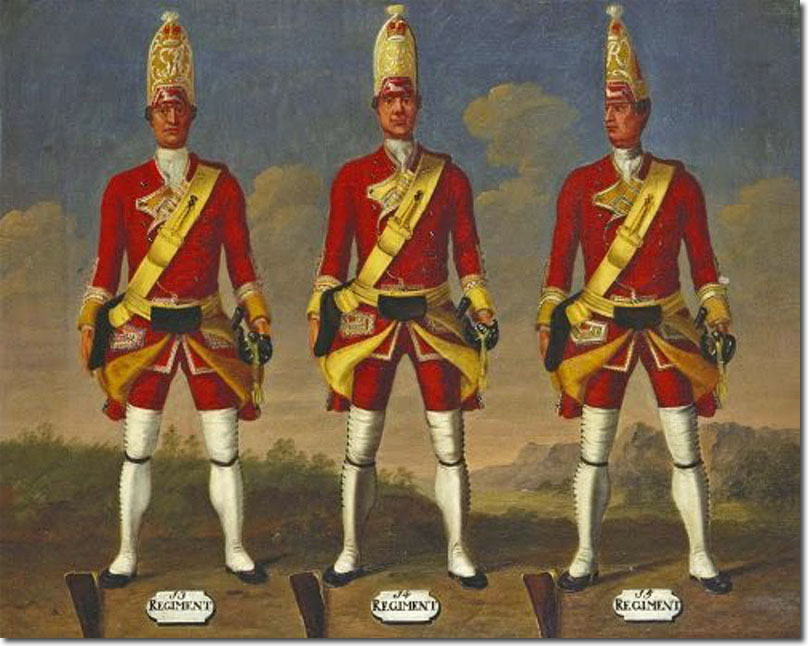|
|


|
| David Morier's painting of grenadiers of 1751 shows three regiments; the 13th 14th and 15th Regiments of Foot. Unfortunately the quality of this reproduction is not good but showing these three regiments together gives a better idea of the shade of yellow cloth used for the facings. The 13th, on the left, has a darker shade than the 14th, in the middle. The 14th actually had buff facings but they look pale yellow here. The 15th Foot had yellow facings which look the same dark shade as the 13th. The facing colour was used on the lapels, cuffs and turn-backs, and as the ground colour of the tall mitre cap. The cap is embroidered in white with the royal Georgian cypher and decorative edging. The crown is in colours at the top and the red patch at the bottom has the white horse of Hanover. The yellow continues around the back of the head but the upper part is red. The lace that borders his lapels, cuffs, pockets and waistcoat is white with blue and red zigzags. This had changed since 1741 when the 13th had a yellow zigzag. By 1768 it had changed again to a simple yellow line. In this painting the coats of the grenadiers are buttoned over. In some of the other paintings in the series the lapels are folded back to the waist to reveal the facing colour, and laced button holes. The grenadiers are distinguished, not only by their mitre caps but also the brass tube attached to the upper part of their shoulder belt. This holds the lighted taper that they use to ignite the fuse on the grenade. The grenades are carried in the black bag on their right hip. The black pouch on the front of the waistbelt is for ammunition for the flintlock musket which in this painting is lying on the ground by their right feet. |
Armed Forces | Art and Culture | Articles | Biographies | Colonies | Discussion | Glossary | Home | Library | Links | Map Room | Sources and Media | Science and Technology | Search | Student Zone | Timelines | TV & Film | Wargames